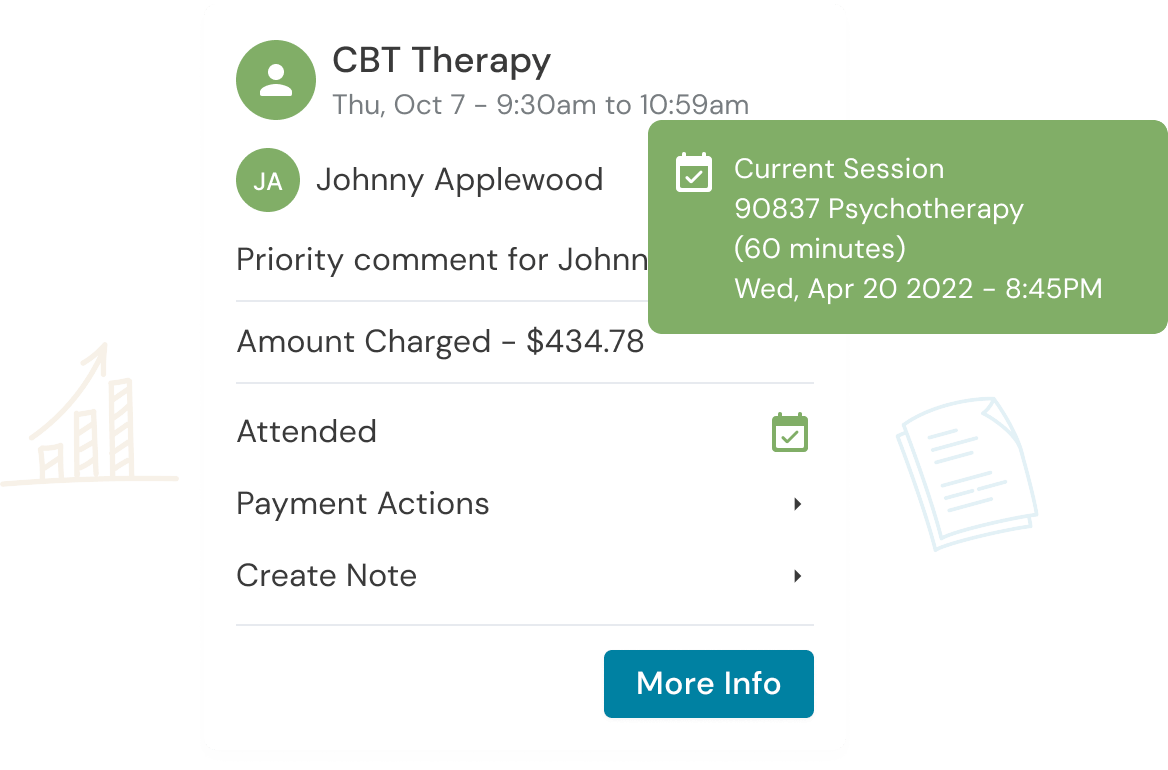In the course of my work at Zencare.co supporting therapists, I’ve sifted through thousands of therapist web profiles in order to get to know excellent local clinicians and have learned that many of these profiles look and sound shockingly similar. It’s often nearly impossible to distinguish one therapist from the next based solely on their profile, even though I discover that the therapists are incredibly talented and unique when I have the chance to speak with them.

Dr. Wendy O’Connor’s office in East Greenwich, RI
I take these lessons to craft unique and powerful professional statements and profiles for Zencare clinicians, and have shared a few tricks I’ve picked up to help you avoid common web profile mistakes, build an online presence that stands apart from the crowd, and drive clients to select your practice above all the rest.
1. A picture is worth a thousand words
Your profile photo is the first opportunity to set a client at ease working with you. The only thing worse than a dark, grainy selfie or a wedding photo with the other half cut off is no picture at all. It’s really intimidating for a client to consider opening up to a therapist when they only know what the practice logo looks like and the therapist’s face remains a mystery. Avoid stuffy blazer headshots in favor of a warm smile, bright clothing, and an office background. And if your profile photo is more than 5 years old, it’s time for a new one.
2. Drop the hypotheticals
A great web profile focuses on a therapist’s skills, background, and the topics they are passionate about, not hypothetical questions, such as “are you feeling stuck?” Instead of trying to convince a prospective client to start therapy, inspire confidence that they should start therapy with you. Focus on what makes you and your practice unique, rather than guess at what the client may be feeling when they visit your page.
3. Avoid clichés
We all know that “it takes courage to start therapy,” and “it’s important to find a therapist who makes you feel heard.” A prospective client wants to know what your practice offers, not be peppered with cheesy motivational slogans.
4. Focus on the relationship
Heavy use of jargon overwhelms first time-therapy seekers. Instead of listing acronyms for therapy modalities, describe your approach in plain English, and detail the kind of relationship you aim to build with clients. Search filters are there for clients who want a specific approach.
5. Highlight what makes you unique
An online presence is your opportunity to take control over your referrals, and no one can have deep expertise in every single approach, challenge, and age group. Pick a few that you most enjoy working with rather than trying to cover all the bases, and keep it consistent throughout your profile. This will resonate more deeply with your favorite clients and position you as a true expert in your specialty.
6. Simplify logistics
There is nothing more frustrating for a client than when a therapist lists an in-network insurance they don’t actually take. Indicate if you are accepting new clients, your office hours, and accurately represent your insurances and fees. This prevents wasted time explaining over and over, that no, accepting a PPO plan does not mean the client only owes a $20 copay. Increasing transparency sets the right expectation for prospective clients; if you have a strong web profile, the value of seeing you as an out-of-network therapist will be clear.
7. Make it easy for clients to get in touch
If the only way for a client to contact you is by picking up the phone and leaving a voicemail, while another therapist with a similar profile offers the option to book an initial call or send an email, chances are, the client is going to reach out to the other therapist. Make it as simple as possible for clients to contact you in the moment they are most motivated to get started.
8. Check your filters
Once you’ve optimized your profile for maximum conversions, make sure you know how clients are reaching your page in the first place. Head to the search page and try testing a few different filter combinations to see where you show up. Pay close attention to accepted insurances, office location, areas of expertise, modality, and client age range to ensure that your filters accurately represent the kinds of clients you most look forward to welcoming into your practice.

Grow with Owl Practice.
Reduce clinical administrative tasks and transform more lives with Owl Practice. Owl Practice provides all the tools you need to make your practice successful. Join the thousands of care professionals using Owl to run their practice every day.



